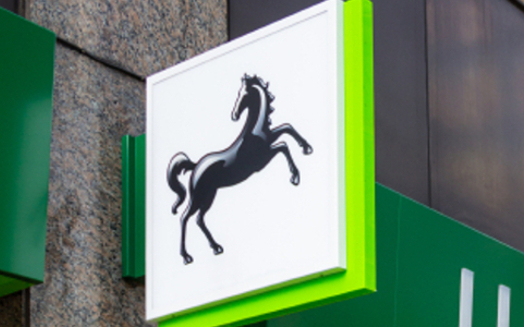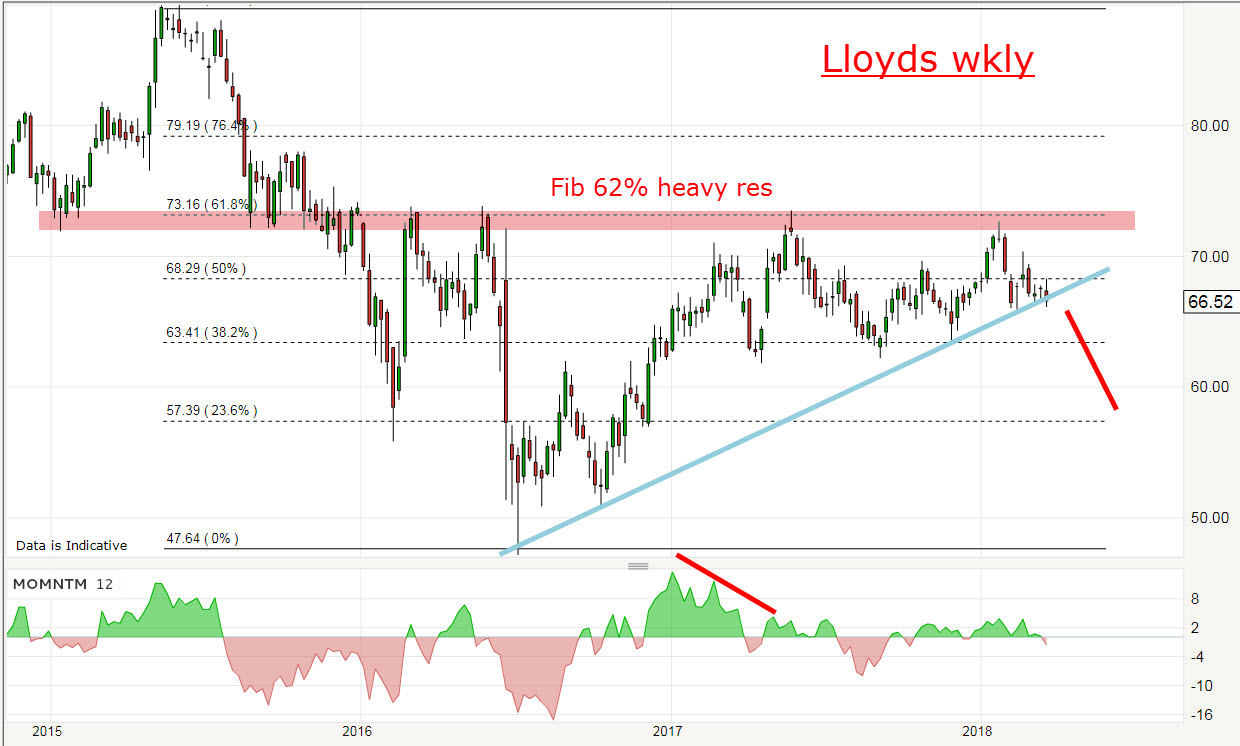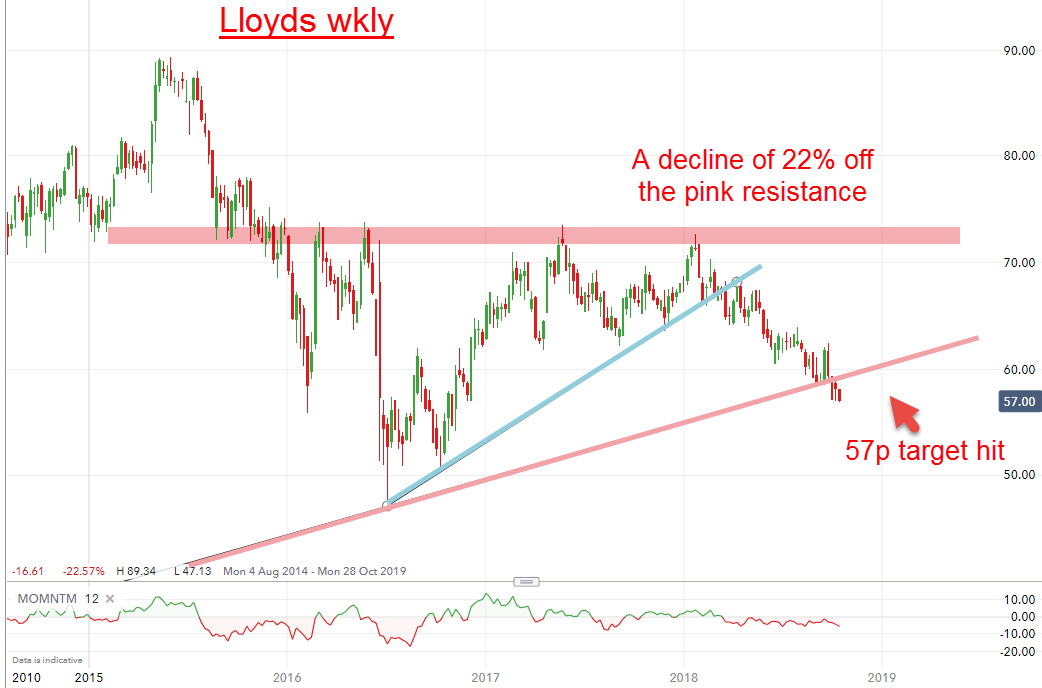Chart of the week: A big question for Lloyds Bank shareholders
22nd October 2018 11:46
by John Burford from interactive investor
Lloyds shares have been a dream for swing traders, but they've just hit technical analyst John Burford's major target, forcing him to take another look.

Lloyds Banking Group follows my roadmap to a T
I last covered this share on 13 August - Will Lloyds ever recover? - and this is a good time to review the position as it has hit one of my major targets that I set months ago.
Many investors – private and institutional alike – hold this share as a genuine investment. That is, their main interest is in the generous dividends that have been paid for many years. They are not so bothered by the share price level per se because they are confident that dividends can be maintained in any environment.
But with the shares heading south, can this assumption be justified any longer? I am confident that if the share prices falls much further, many will question it – and sell.
• Chart of the week: Will Lloyds ever recover?
• The week ahead: Lloyds Bank, Barclays, RBS
• Why Lloyds Bank shares are in danger
But for swing traders like myself, it has been a dream to trade because early on, I examined the very long-term chart and concluded the odds for a decent recovery were slim and the path of least resistance was down. This is the chart I posted on 26 March:

And this is what I wrote then:
"As I pointed out at the time, the pink zone at 72–73 has been very strong resistance (and support till early 2016). And in late January, the shares had tested that zone (again) and was turned back (again). Interestingly, that was the precise date when the Dow made its all-time high.
"That zone is also the Fibonacci 62% retrace of the entire decline – another very strong area of resistance."
That observation set the 72p level at an excellent area to short in anticipation of the renewed downturn that had been in effect since the high set way back in 1999. Here is the monthly chart I posed back in March (dead cat added for emphasis):

Source: interactive investor Past performance is not a guide to future performance
In other words, even given the huge bank bail-outs with QE funny money, rampant house price inflation and vigorous equity bull markets, Lloyds shares have fallen dramatically. Does not this fact give bulls pause for thought?
And the 'bounce' off the post-Crash 2009 lows has been exceptionally weak – more like a dead cat bounce, in fact. This is a very bearish picture – and here is the updated weekly chart:

Source: interactive investor Past performance is not a guide to future performance
And last week, my 57p target was attained. That is a 22% decline off the March 72p high. And it has reached my pink trendline drawn off the June 2016 low at 47p. Nice.
And this presents one of the most difficult challenges for a trader. It has reached a major target set long ago, so what is the best strategy here? I know it's a nice problem to have, but making an unwise decision here could cost you money – and that is how we keep score as traders.
In fact, I believe there is no 'right' or 'wrong' strategy here. Very bearish traders would just sit tight and do nothing. Very cautious traders would grab the profits and run. Middling traders would take some profit here and sit on the remainder.
What would you do?
John Burford is the author of the definitive text on his trading method, Tramline Trading. He is also a freelance contributor and not a direct employee of interactive investor.
These articles are provided for information purposes only. Occasionally, an opinion about whether to buy or sell a specific investment may be provided by third parties. The content is not intended to be a personal recommendation to buy or sell any financial instrument or product, or to adopt any investment strategy as it is not provided based on an assessment of your investing knowledge and experience, your financial situation or your investment objectives. The value of your investments, and the income derived from them, may go down as well as up. You may not get back all the money that you invest. The investments referred to in this article may not be suitable for all investors, and if in doubt, an investor should seek advice from a qualified investment adviser.
Full performance can be found on the company or index summary page on the interactive investor website. Simply click on the company's or index name highlighted in the article.
Disclosure
We use a combination of fundamental and technical analysis in forming our view as to the valuation and prospects of an investment. Where relevant we have set out those particular matters we think are important in the above article, but further detail can be found here.
Please note that our article on this investment should not be considered to be a regular publication.
Details of all recommendations issued by ii during the previous 12-month period can be found here.
ii adheres to a strict code of conduct. Contributors may hold shares or have other interests in companies included in these portfolios, which could create a conflict of interests. Contributors intending to write about any financial instruments in which they have an interest are required to disclose such interest to ii and in the article itself. ii will at all times consider whether such interest impairs the objectivity of the recommendation.
In addition, individuals involved in the production of investment articles are subject to a personal account dealing restriction, which prevents them from placing a transaction in the specified instrument(s) for a period before and for five working days after such publication. This is to avoid personal interests conflicting with the interests of the recipients of those investment articles.